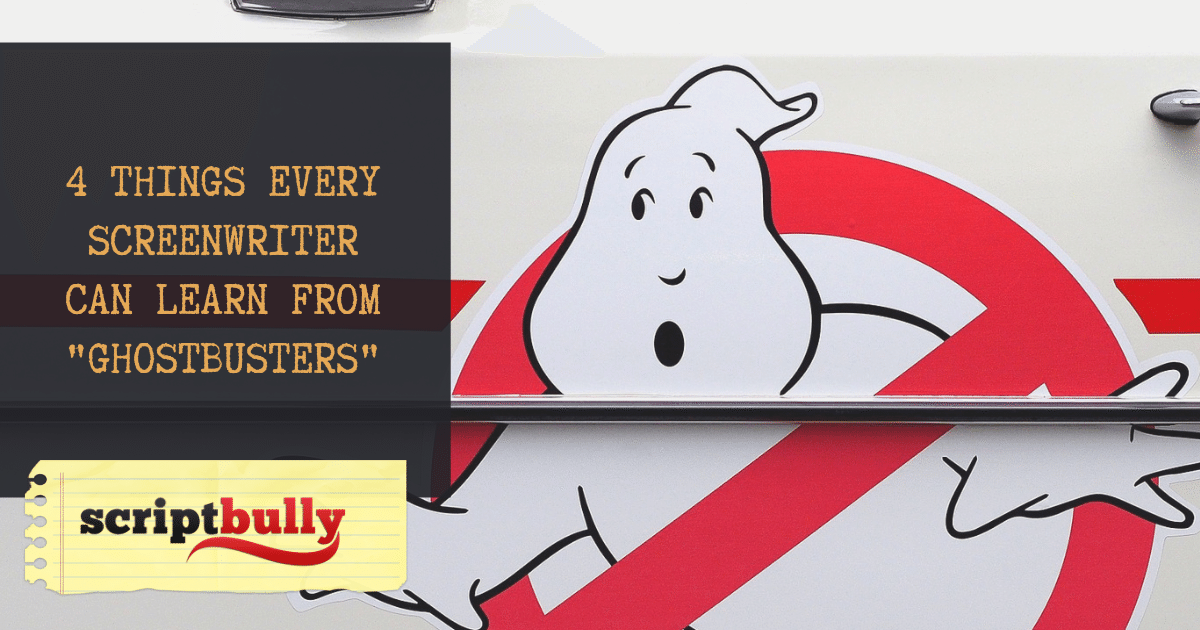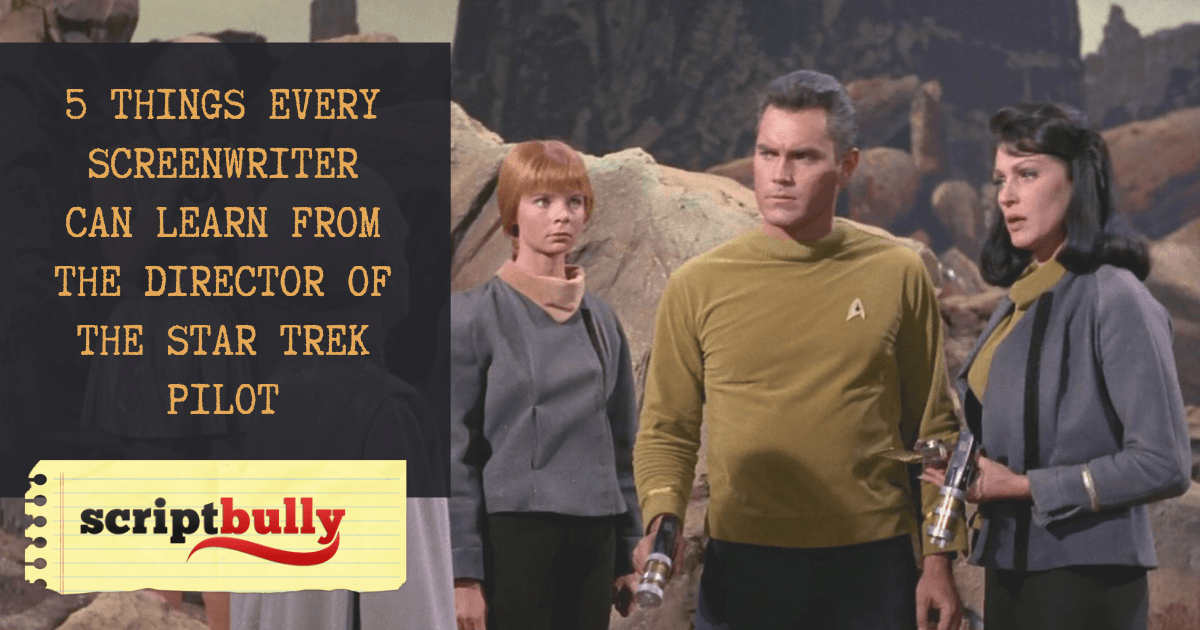Originally conceived as a side project for Dan Aykroyd and his SNL castmate John Belushi – that would have been awkward – “Ghostbusters” was the most commercially successful comedy of the 1980s.
But its commercial success obscures that this film is a smart, focused comedy that doesn’t let special effects and jokes get in the way of a good story. (Even if that story is as implausible as Belushi fitting into a Ghostbusters suit.)
So, here are 4 Things Every Screenwriter Can Steal Learn From That Classic 80s Blockbuster “Ghostbusters”:
 Screenwriting Hack #1 You Can Can
Screenwriting Hack #1 You Can Can Steal Borrow From Ghostbusters: Give Your Characters “Real” Jobs (In an Unreal World)
“Ghostbusters” may seem like an outlandish plot on the surface – three paranormal academics start a ghost-removal business. But the genesis for the story, as Aykroyd conceived it, was much simpler: a movie about “ghost exterminators.”
Though the action, as originally conceived, was quite otherworldly – the “extermintaors’ would travel the universe fighting ghosts (including the “Stay Puft Marshmellow Man” – the actual occupations of the protagonists are pretty ordinary.
- They get stiffed by their clients
- They work long hours
- They fight to stay within government compliance
This, according to production notes, was the element Aykroyd fought strongest for during the development process. (And that he felt provided the real “spine” of the story.)
Screenwriting Hack #2 You Can Can Steal Borrow From Ghostbusters: Don’t Cut Out All Your Backstory
There is an axiom in the screenwriting trade that you need to START your story as late as possible – and cut out all the extraneous bits in the beginning.
And this was Aykroyd and Ramis’s initial instinct when they wrote the first treatment for “Ghostbusters” – which entailed them starting the story off ALREADY established in business. (And cynical about the whole enterprise.)
But the director Ivan Reitman felt the story was too rushed. That the audience would enjoy seeing the Ghostbusters:
- Get kicked out of Columbia
- Find office space
- Buy an ambulance
- Stumble their way through their first couple jobs
Reitman argued, and I think rightfully so, that as long as exposition is funny and gets the audience on the hero’s side – then it’s not something to simply cut. (It’s something to actually expand on.)
Key Takeaways (Or For Those With ADD):
- Give your chars ordinary jobs, in extraordinary worlds
- Don’t let facts get in the way of story
- Exposition isn’t always bad
- Story flagging? Add a character
 Screenwriting Hack #3 You Can Can
Screenwriting Hack #3 You Can Can Steal Borrow From Ghostbusters: Don’t Let Science (or Reality) Get in the Way of a Good Plot Point
One of the most interesting plot devices in the film is the whole “Mentalist cult members in the 20s building a spectral transmitter on top of a NYC apartment building to commune with an ancient demon god” thing.
That’s because it sounds like something that might have “some” historical basis. In fact, Ph.D dissertations have been written about the apocalyptic nature of “Ghostbusters” and its echoes of Aramaic and Judeo-Christian apocalpytic prophecy in relation to the pagan god “Zuul.”
There are even blogs dedicated to the photos of “demonic” roofs of New York skyscrapers. (And even a rather strange Freudian analysis of how “Gatekeepers” and “Keymasters” represent the sexual unconscious.)
Only problem: it’s total horsecrap. There are no demonic rooftops in New York City. (And no antennaes to the nether-realms.)
Co-writer Harold Ramis and Aykroyd (who’s had an an obsession with the occult for years) spent weeks poring through paranormal texts to find a foe with some historical basis the crew could fight.
Nothing worked.
And in the end they just needed an excuse to set the entire third act in Dana’s apartment. (And so they came up with Zuul and Gozar and the Keymaster…and all the other crap that spanwed generations of doctoral dissertations.)
 Screenwriting Hack #4 You Can Can
Screenwriting Hack #4 You Can Can Steal Borrow From Ghostbusters: When You Need Exposition in a Pinch (Add Another Ghostbuster)
Fans over the years have wondered why the Ghostbuster creative team added a fourth (and final) Ghostbuster to the team, played by Ernie Hudson. (Especially since so much of the “bonding” scenes are already established in the first act.)
For Aykroyd, the answer was simple: he needed somebody for his character to explain how all the “Ghostbuster shit” actually worked. This included the all-important ghost containment unit – which proved to be a pivotal plot point that spins us into Act III when the EPA shuts the whole system down.
So, if you feel the audience needs more information about the inner-workings of a complex story mechanic – don’t have your main characters tell each other crap they already should know. Simply add another musketeer, Jedi, or Ghostbuster to the mix and get that exposition out there in a dramatic and interesting way.




 Screenwriting Hack #3 You Can Can
Screenwriting Hack #3 You Can Can  Screenwriting Hack #4 You Can Can
Screenwriting Hack #4 You Can Can 

